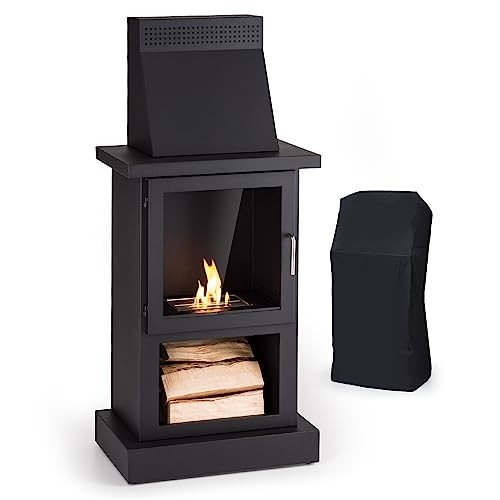A Comprehensive Guide to Buying a Fireplace: Choosing the Right Fit for Your Home
Fireplaces have long been a central feature in homes, providing heat, ambiance, and a meeting place for friends and families. Whether you're constructing a brand-new home, remodeling an existing area, or merely aiming to upgrade your existing setup, buying the ideal fireplace can make all the distinction. This guide aims to offer a thorough summary of various fireplace alternatives, factors to consider for installation, and tips for upkeep.
Types of Fireplaces
When considering a new fireplace, homebuyers will discover numerous types to pick from. Each type features its own distinct functions, benefits, and downsides. Below is a breakdown of typical fireplace types:
| Fireplace Type | Description | Pros | Cons |
|---|---|---|---|
| Wood-Burning | Traditional alternative utilizing logs for fuel. | Genuine experience, strong heat source. | Needs routine upkeep, fuel storage, and ventilation. |
| Gas | Utilizes gas or lp, generally with a vented or ventless option. | Easy to utilize, less maintenance than wood. | Needs a gas line, might lose some ambiance. |
| Electric | Plug-and-play alternatives without any requirement for venting, supplying simulated flames. | No installation required, safe for houses. | Does not have the authenticity of genuine flames. |
| Ethanol | Utilizes bio-ethanol fuel in a portable or fixed unit. | Clean burning, no venting needed. | More expensive fuel expenses, limited heat output. |
| Pellet | Burns compressed wood pellets for fuel, comparable to wood-burning. | Eco-friendly, low emissions. | Requires electricity for operation, specific fuel needed. |
Secret Considerations When Buying a Fireplace
1. Room Size and Layout
The fireplace ought to be suitable for the size and layout of the space. A fireplace that is too large may overwhelm the space, while one that is too small might not efficiently heat the location.
2. Heating Needs
Think about how much heat you need for the area. An electric fireplace might be enough for a smaller sized room, while a wood-burning or gas fireplace is ideal for larger areas requiring considerable heat.
3. Aesthetic and Style
Fireplaces can be found in a range of styles, from contemporary to rustic. It's vital to select one that complements the overall decor of your home.
Popular Fireplace Styles:
- Modern smooth styles
- Traditional ornate finishes
- Rustic stone or brick
- Minimalist electric models
4. Fuel Source
Picking a fuel source is crucial for function along with preference. Homeowners ought to consider the schedule, cost, and benefit of the fuel they want to utilize.
5. Setup Requirements
Comprehend the setup requirements, as some fireplaces, especially wood-burning systems, require a chimney, while others may be more simple to set up. Property owners may need to seek advice from with professionals to guarantee appropriate setup and compliance with local codes.
6. Spending plan
Fireplaces can range considerably in cost from economical electric designs to high-end gas and wood-burning units. Aside from the preliminary purchase rate, consider setup expenses and continuous fuel costs.
Installation Process
Setting up a fireplace is a substantial task that may need expert assistance. Here is a summary of the basic actions involved:
Planning and Design
- Assess places and styles based on design and heating requirements.
Obtain Necessary Permits
- Inspect local building regulations and get any required permits for installation.
Pick a Professional Installer
- Consider employing a certified specialist for security and compliance with codes.
Prepare the Installation Site
- Clear the area and set up any needed products or support structures.
Follow Manufacturer Instructions
- Comply with specific guidelines provided by the fireplace manufacturer throughout installation.
Final Inspection
- After installation, ensure a final examination is conducted to confirm the system's security and performance.
Upkeep Tips for Your Fireplace
To guarantee durability and optimum efficiency of your fireplace, regular maintenance is essential. Here are some tips to keep your fireplace in fantastic shape:
Wood-Burning Fireplaces
- Tidy the chimney a minimum of when a year to avoid creosote buildup.
- Usage skilled wood for less smoke and much better effectiveness.
- Inspect the fireplace structure for fractures or deterioration.
Gas Fireplaces
- Examine gas connections for leaks periodically.
- Clean the glass and the burner for optimum performance.
- Arrange annual maintenance with a qualified professional.
Electric Fireplaces
- Dust and tidy the unit routinely.
- Examine connections and replace any defective parts if needed.
- Guarantee the system is gleaming tidy before use each season.
Ethanol and Pellet Fireplaces
- Keep fuel sources kept safely and far from heat.
- Clean the burner and make sure no blockages happen.
FAQs
Q: What kind of fireplace is most effective for heating?A: Gas fireplaces and
pellet stoves tend to have greater performances, converting more energy to heat compared to wood-burning choices.
Q: Can I install a fireplace in any room?A: While numerous rooms can accommodate a fireplace, ventilation, offered space, and regional guidelines might impact expediency.
Q: Are electric fireplaces safe?A: Yes,
electric fireplaces are generally very safe, consist of no genuine flames, and typically include functions that avoid getting too hot.
Q: How do I select the ideal size fireplace?A: Consider the square video of the room and consult with suppliers about recommended BTU scores for heating effectiveness. Getting a fireplace is a significant
choice that can greatly improve your living area. By thinking about the type of fireplace, your heating requires, installation requirements, and continuous maintenance, house owners can select the perfect unit to meet their preferences and enhance their home for several years to come. Whether you lean toward a traditional wood-burning fireplace or a modern electric solution, the best fireplace will offer warmth, convenience, and style that can be cherished for generations.

